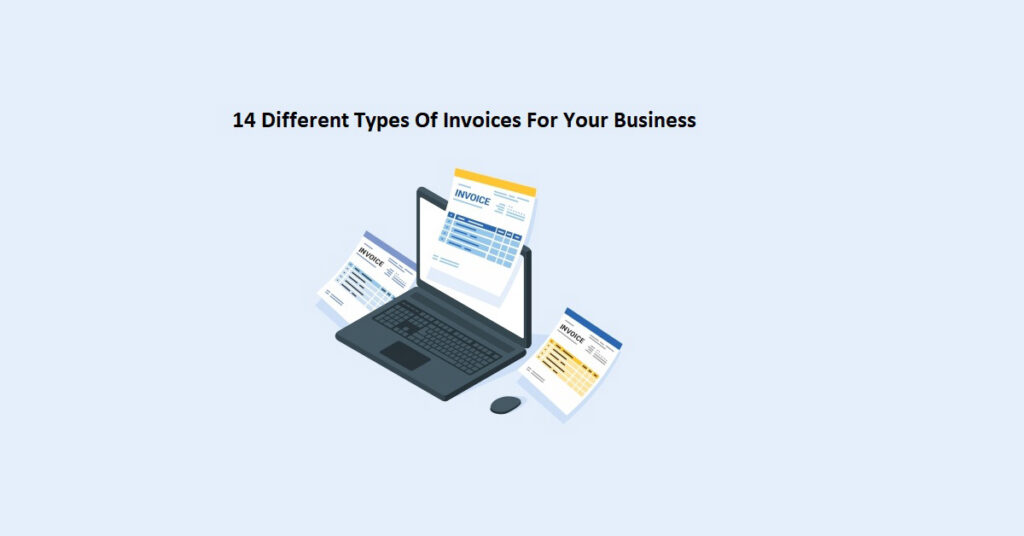An invoice creates a big role for a business. It includes details considering the cost of the products purchased or services rendered to the buyer. These have also proven to be a legal record for both buyer and seller, so there will be no discrepancy later on.
As we all know, for a very long time, people were focusing on manual invoicing and either making the format on their own or asking any experienced person to do the same for them.
But we cannot forget that manual invoicing is a time-consuming process, and businesses will be able to do it when the process is completed. This sometimes results in missing information, due to which business faces losses.
Well, not anymore because thanks to technology, now there is no need to rely on the manual invoicing process because invoicing software is available around the world. From small to large business owners, this software caters to their needs.
However, whenever it comes time to choose the billing software, one must be aware of the types of invoices available. In this article, we are about to discuss the different types of invoices available for every business in detail. This helps individuals figure out the type that suits their business the best.
Different types of invoices for your businesses:
1. Standard invoice:
The standard invoice is the most common type of invoice used by businesses today. The business generates it and submits it to the client. The format of a standard invoice is quite flexible, so it caters to the needs of small businesses easily. It fits with most of the industries and billing cycles, so there will be no problem in managing the expenses. There are certain details mentioned in the standard invoice format, which include:
- Contact information for the business
- business name
- Contact information for the client
- Client name
- Invoice number
- The amount that the client must pay
2. Debit invoice:
A debit invoice is also known as a debit memo, and the business issues it to the client in order to let them know about the increase in the amount that they need to pay to the business. It is very helpful for small businesses and freelancers whenever there is a slight adjustment to an existing bill.
For example, if a small business has provided more services after issuing the invoice and the need to mention it, then the debit invoice will cater to the same needs.
3. Credit invoice:
A credit invoice is also known as a credit memo, and this needs to be issued by the business to the client in order to proceed with any discount or a refund. Furthermore, if there was an error in the previous invoice, the same can be dissolved with the credit invoice from the business side. The credit invoice includes the information considering the negative total number.
For example, if all businesses are offering a discount of $50, then the same will be mentioned as -$50 in the credit invoice.
4. Mixed invoice:
A mixed voice is a combination of credit and debit charges over a single invoice. The total amount will be calculated after figuring out all the positive and negative numbers, and the final number will turn out to be either positive or negative. This turned out to be profitable for small businesses when they are in need of an increase for any particular service and also wish to offer a discount or refund. All the details will be available in a single invoice, and there will be no need to create multiple invoices.
5. Timesheet invoice:
The timesheet invoice is in consideration when the billing has been done according to the number of hours they have worked along with their standard rate of pay. Most of these invoices are used by contract employees. Generally, the people or businesses that require timesheet invoices include lawyers, business consultants, creative agencies, and psychologists.
6. Commercial invoice:
A commercial invoice is in consideration when the goods need to be sold to customers internationally. The business provider issues this invoice having all the details that are needed to be determined for customs duties for cross-border sales. The majority of the information mentioned on commercial invoices includes shipment quantity, total value, description of good, weight or volume, and packaging format.
7. Expense report:
An expense report is in use when an employee submits a request to an employer for reimbursement of business-related expenses. For example, if the employer is traveling to complete the task of the business, the expenses that have occurred throughout the trip will be managed by the company. To get the amount back, they need to create an invoice and mention all the details. After mentioning all the details, it will be approved by the business, and they’ll get the amount upfront.
8. Interim invoice:
An interim invoice is used to do the billing on large projects. There are different modes of payment that businesses accept, and the payment cycle varies accordingly. For this, the client and business both need to agree to payment modes before the creation of the invoice. After the task is completed, the business will submit the interim invoice to the client and collect the payment. These are helpful for small businesses in managing the cash flow, and they can also keep working on the projects for a longer period of time.
9. Pro-forma invoice:
A pro-forma invoice is an estimated invoice, and it needs to be sent to the client before starting the project. For example, an XYZ client is looking forward to taking digital marketing services from an ABC company. Before finalizing the product, the ABC company needs to submit an invoice having details of the amount with respect to the services they are offering. It is helpful for the XYZ client to figure out whether they are in a state to afford it or not. When both parties are done with negotiation and pricing parameters, then the project starts.
10. Sales invoice:
A sales invoice is in use when the business is sending a request to the buyer to collect the payment for a product or service. The major information mentioned in the sale invoice includes seller information, delivery date, buyer address, payment terms, item and their rate, total price, and so on. The payment links and bank details are also mentioned so that after the payment has been made, the invoice can turn out to be a legal record of the transaction.
11. Digital invoices:
Digital invoices are those invoices that the business generates with the help of software. The majority of the information available on it includes the seller’s details, quantity, price, item name, the total amount to be paid, and so on. These invoices can be created in real-time as well. Also, making the customizations in the digital invoice is very easy because, with the help of a word processor, spreadsheet tool, and other options available, the editing can be carried out.
12. Final invoice:
A final invoice has been sent to the client after the completion of the project. On the final invoice, the business is requesting the amount due. It has all the details from start to finish.
In most cases, it happens that the business has already received a particular amount before starting off the project, and the same has been mentioned in the invoice. At the end of the amount that is spent, it will be paid by the client.
The details available on the final invoice include the invoice number, total cost of the project, due date payment methods, and details of services offered.
13. Reoccurring invoice
Recurring invoice is for all those businesses that are charging clients the same amount periodically for offering the services. These are majorly in consideration by the IT department who get a particular amount from their client every month. Along with that, the freelancer as well generates the reoccurring invoice in order to get the amount for the services offered.
14. Past due invoice:
Past due invoice is in use when the client has not paid the amount before the due date listed on the final invoice. The business generates this report and sends it to the client directly. All the details that were mentioned on this invoice as mentioned in the final invoice.
Following are the different types of invoices for small businesses. We advise you to choose the type as per your business requirement as we have already discussed the particular features integrated into each type, so it is easier to figure out which one will be the best for your business.
Invoice Office features all the important features which are important for your business to grow for a longer duration and keep the cost record as simple as possible. There are different templates also included, and accordingly, users can choose them!




